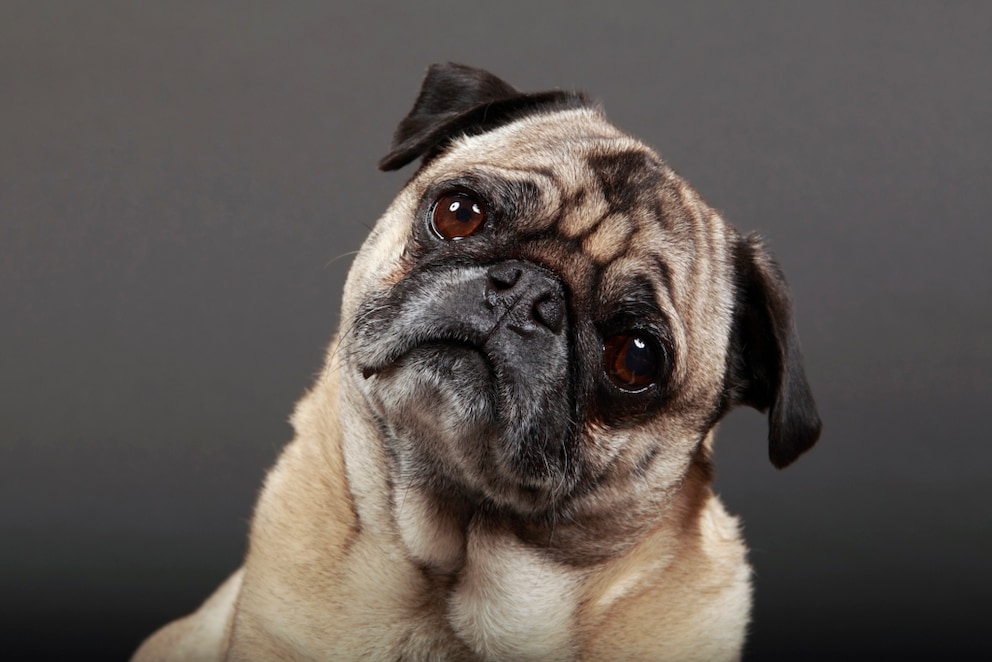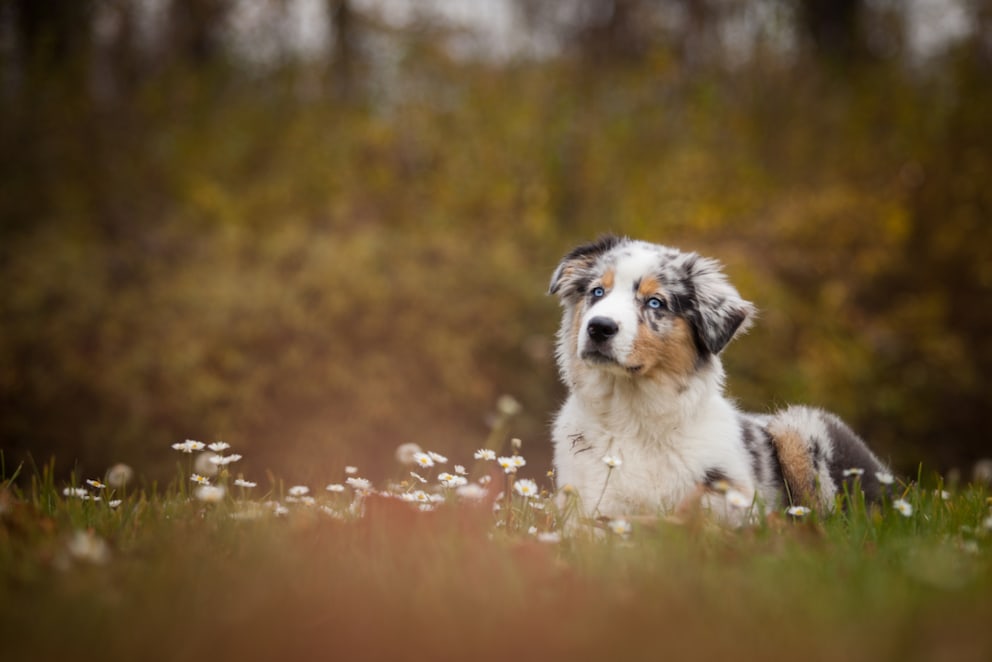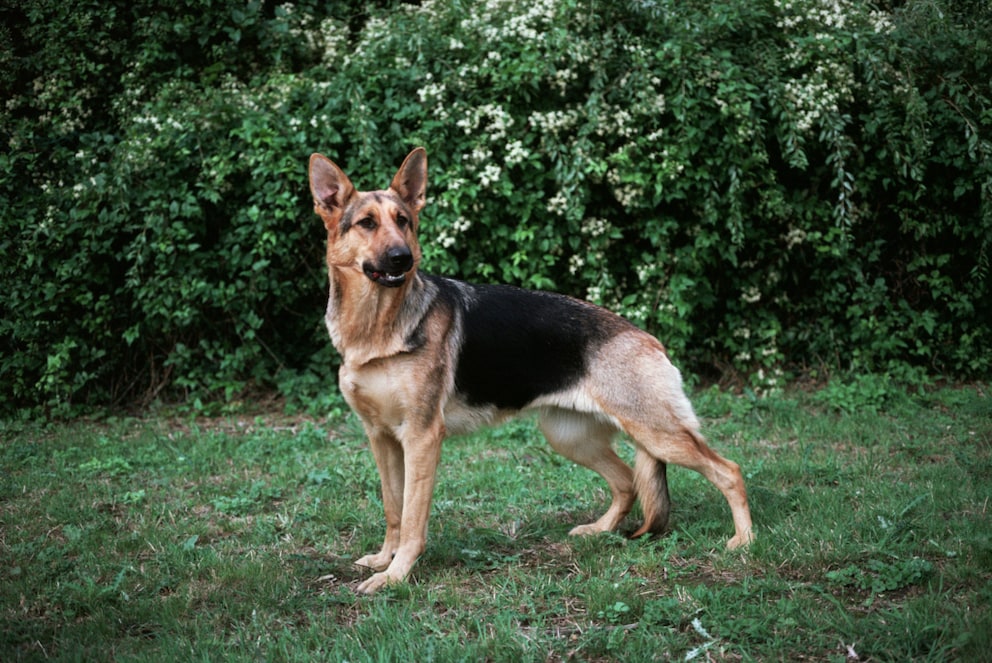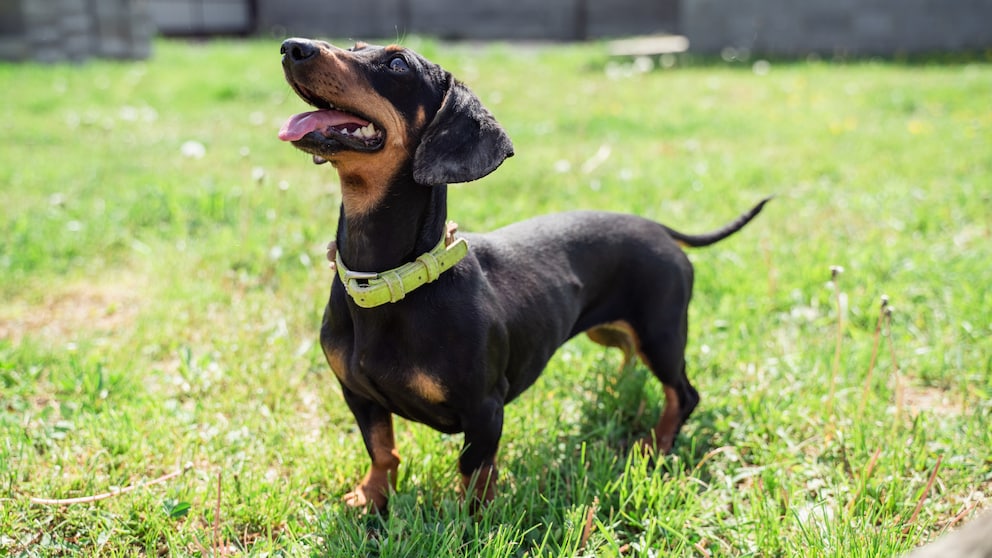September 28, 2024, 8:54 am | Read time: 6 minutes
Eye, hip, and breathing difficulties: Certain diseases are particularly common in some dog breeds. PETBOOK reveals the reasons for this and lists the dog breeds with the worst hereditary diseases.
The icy blue eyes of the Australian Shepherd, the spotted coat of the Dalmatian, or the short legs of the Dachshund – these and other visual characteristics are the reason pedigree dogs are so popular today. However, these characteristics are the very reasons for the increased incidence of hereditary diseases in certain dog breeds because the predisposition to various diseases is passed on with typical breed characteristics. To recognize diseases in good time and to avoid supporting torturous breeding, dog owners should familiarize themselves with breed-specific hereditary diseases.
Why do certain hereditary diseases occur more frequently in some dog breeds?
Why do certain diseases occur more frequently in some breeds? To find out, we need to look back a little into the past: Dog breeding probably began with the selection of certain wolves that were particularly trusting.
When this selection began, humans discovered that there were wilder animals among the wolves as well as those who recognized the value of being close to humans, where food was readily available. This selection went even further later when humans realized that the animals were suitable for tasks including hunting, guarding, and herding. The animals were already specifically selected for this at that time.
Today, breeds are bred primarily for their appearance
This selection was later developed even further and gave rise to various dog breeds now valued less for their functions and more for their appearance. To preserve breed-specific characteristics, breeding lines were often crossed with each other in isolation.
As a result, the genetic pool is smaller, which unfortunately means that mutated genes that lead to genetic diseases occur more frequently in specific breeds. The increased incidence of diseases within certain breeds is known as “breed predisposition.”
Around 800 hereditary diseases are known in dogs
A disease only needs to be present in the parents’ genetic makeup for it to occur. This can occur even when both parents are healthy, and the disease has no visible manifestation.
If two animals predisposed to a disease are mated, the disease will break out in the offspring. Around 800 hereditary diseases are known in dogs, and genetic testing is being used to try to get these under control. Breeders aim to exclude carriers of hereditary diseases from breeding programs to ensure the health of the offspring.
These are the 7 dog breeds with the worst hereditary diseases
Below, we list breeds frequently affected by hereditary diseases in no particular order.
Dachshund
You either love or hate Dachshunds. These small, robust hunting dogs are known for their stubbornness and strong character. Unfortunately, the breed also comes with some typical diseases. Dachshunds tend to suffer from intervertebral disc disease, a movement disorder that is even named after the breed. Dachshund paralysis stems from the breed’s short legs and long spine. You can protect your Dachshund from the disease to a certain extent by carrying him up and down stairs.
Pug
Animal welfare activists sometimes refer to pug breeding as ‘torture breeding’ because the shortened face leads to constant shortness of breath in the animals. Misaligned teeth and conjunctivitis also frequently affect pugs. The stocky build poses a danger in high temperatures and can lead to overheating. The Pug is not the only breed with such a portfolio of diseases. French Bulldogs also have similar diseases.

Australian Shepherd
The pretty, colorful pied coat and blue eyes, which give the Australian Shepherd its typical, beautiful appearance, are associated with the occurrence of various diseases. The rare pigmentation, also known as the merle factor, often leads to serious health problems. The dogs are usually deaf because their inner ear is malformed. The eyes are also often affected, with fissures forming in the membranes of the eyes, causing blindness in many dogs. The heart, bones and genitals of the animals can also be affected and deformed by the pathological changes.

Jack Russell Terrier
The easily nervous, alert Jack Russell Terrier often suffers from eye diseases such as cataracts and lens luxation, as well as numerous skin allergies. The breed is also often affected by deafness.

Golden Retriever
The Golden Retriever, once a highly fashionable breed, was bred in large numbers and remains one of the most popular dogs. Many breeders were more interested in profit than the health of the animals, causing Golden Retrievers to be susceptible to a variety of diseases, including epilepsy, hip dysplasia, and allergies.

Chihuahua
This small dog breed often suffers from patella luxation, a disorder in which the kneecap repeatedly pops out of its socket. In some cases, the kneecap remains dislocated and must be surgically straightened. The heart also frequently causes problems for Chihuahuas. Mitral valve insufficiency often occurs here, where the heart’s mitral valve is leaky, and blood flows back into the atrium. The disease is hereditary in very small breeds.

German Shepherd
Bred as a herding dog, the German Shepherd has a severely sloping back, even deformed in some dogs. Many German Shepherds also suffer from hip joint dysplasia and damage to the joint cartilage. To relieve the painful joint, Many German Shepherds adopt a crooked gait.

Should I support the breeding of certain breeds?
If you’re considering purchasing a specific breed but are concerned about potentially supporting animal suffering, you may have heard the term “torture breeding.” This term refers to breeding dogs with physical traits that can lead to distress, suffering, or pain for the animals. Breeding of dogs with breed-typical diseases, therefore, falls into this category. However, there are responsible breeders who tackle these diseases by carrying out genetic tests and only breeding animals with healthy hereditary traits. Ensure you purchase your dog from a reputable breeder who prioritizes animal health and welfare.
Conclusion
Typical visual characteristics of dog breeds are often associated with genetic predispositions to certain diseases. Breeds such as dachshunds, German shepherds, or pugs not only have their special appearance but can also be carriers of certain diseases. Before buying your dog, find out which diseases may also be associated with the breed and look for a reputable breeder. This way, you can minimize your dog’s risk of contracting a disease.

Clouding of the eye lens Signs, diagnosis, and treatment of cataracts in dogs

Preventing animal suffering Torture breeding of guinea pigs! Avoid these breeds

Not recognized in Germany Munchkin, the popular “dachshund cat” with shortened legs
Sources:
- tierarzt-karlsruhe-durlach.de, “Erbkrankheiten des Hundes” (accessed on 01.10.2024)
- kleintierzentrum-friesoythe.de, “Was sind Erbkrankheiten?” (accessed on 01.10.2024)

